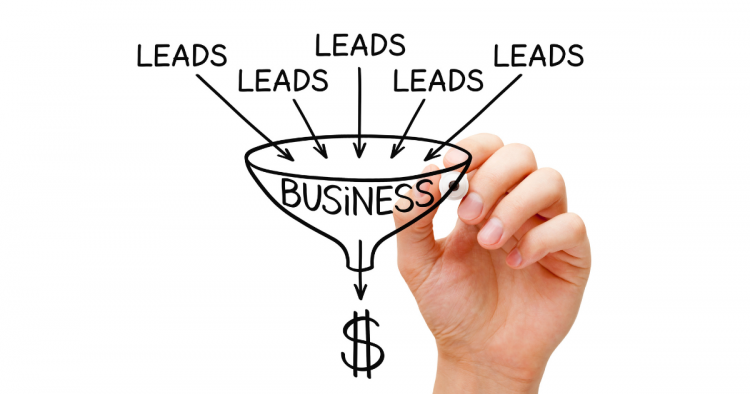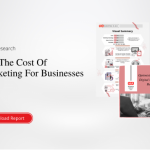Even though marketing and sales functions work together to achieve business objectives, there is a big difference between the marketing funnel and the sales funnel. Let’s explore how the two differ.
Peter Drucker once said, ‘The aim of marketing is to make selling superfluous.’
While, on the face of it, this can be a powerful belief system for a brand, no brand has ever really mustered the courage to depend entirely on marketing and do away with sales. Both marketing and sales independently exist as crucial business functions within most organizations.
Businesses depend on both marketing and sales to grow revenue and profitability and reach their target markets with optimum effectiveness. However, to ensure that both functions run efficiently, it’s essential to know how they interact with the customer journey. That is why business leaders and managers rely on mapping and tracking the customer experience through marketing and sales funnels.
Although many prefer to use the terms marketing funnel and sales funnel interchangeably, these are, in fact, two very different funnels. Before we differentiate the marketing funnel and sales funnel, let’s look at each one of them individually and understand their purpose.
What is a Marketing Funnel?
A process ‘funnel’ maps the different stages through which a brand’s target audience moves before finally choosing to do business with the brand. It is called a funnel because it narrows down at every stage and helps a brand find relevant and paying customers from the world of prospects and opportunities.
Naturally, a marketing funnel is designed with the same intent and entails different stages that a brand’s target audience goes through when coming in contact with the brand’s marketing communication. These are:
1. Awareness: This is the stage when all the marketing communications of a brand are designed to generate awareness among the target audience. The primary target market is defined, and specific marketing channels and communication formats are selected to reach this audience. The core objective is to make the target market aware of the brand and its value proposition. This could include the brand’s website, social media accounts, entertaining ads, outdoor media, and PR activities.
2. Interest: Among all the people who are aware of the brand, there may be some who would be interested in the brand’s offerings. A marketing funnel moves them from the awareness stage to the interest stage by providing more relevant, informational, and targeted content. Potential customers at this stage are also engaged through inbound marketing activities like on-site chat features and detailed product brochures.
3. Consideration: The funnel narrows down to the consideration stage, which focuses on customers who are actively considering the brand for purchase. In this stage, the customers have most likely identified their top 3 or 5 brand preferences and stay on the lookout for their products and offers. Marketing communication at this stage becomes more relative to the competition and appeals to the practical side of the customer’s mindset.
4. Preference: The next stage is preference, when the customer may develop a latent or expressed preference for the brand. Here, the brand’s benefits and social or emotional relevance are highlighted in order to endear the brand to the customer and prompt a purchase.
5. Loyalty: A customer who purchases the brand’s offerings multiple times and has a strong preference for the brand can then move to the next stage of the marketing funnel, loyalty. Marketing communication and initiatives can be directed to benefit loyal customers through loyalty clubs, special discounts or promotional offers, and a sense of community. These customers are also likely to respond to cross-sell and up-sell campaigns of the brand, generating significant repeat business.
6. Advocacy: Finally, a select few loyal customers can become brand advocates and be motivated to generate word-of-mouth publicity, provide referrals, and even co-create new products by participating in the research and innovation process.
As is evident, the top stages of the marketing funnel are focused on generating leads and qualifying prospects. In contrast, the middle and bottom stages are focused on nurturing leads and keeping potential customers engaged with brand communication.
Leads that qualify from the marketing funnel ultimately move to the sales funnel, and the sales team then starts making efforts to convert them and close the sale. Which brings us to the question – what is a sales funnel, and how does it differentiate from the marketing funnel?
What is a Sales Funnel?
Just like the marketing funnel, a sales funnel also comprises multiple stages through which a customer passes before completing a purchase. The early stages of the sales funnel are designed to increase the brand reach and awareness and thus run parallel to the marketing funnel. However, the middle and bottom stages of the sales funnel focus on sales conversion instead of lead nurturing. The main stages of the sales funnel are:
1. Awareness: In this topmost sales funnel stage, the primary target market is reached through outbound sales activity. This could include sales calls, emails, and face-to-face customer interactions. The core objective is to make the target audience aware of the brand’s value proposition and screen prospects from suspects based on how they react.
2. Interest: Those interested in the brand’s offerings are then qualified as prospects and presented with more information to qualify them as leads. At this stage of the sales funnel, sales personnel may personally interact with the prospects and offer multiple products or solutions to them. Much emphasis is laid on explaining the product through demos, trials, and sampling.
3. Intent or Desire: The next stage is intent or desire, when the customer may express that they are getting ready to make the purchase. This is also the point at which leads can be qualified for further investment of time and effort. As interested leads start asking questions and demanding more information, more personalized attention is given to them. Here, the brand’s benefits and emotional relevance are also stressed to create an urgency for purchase.
4. Evaluation: A customer intent on buying the brand’s offering can then start evaluating the price concerning the value, all the variates available, and promotional offers to utilize. This evaluation is supported by detailed sales support and product-specific information that is shared on a need basis and is, at times, customized. Negotiations are also possible at this stage of the sales funnel as the customer may seek price or service flexibility.
5. Action or Purchase: Finally, the prospect takes action or makes the purchase, becoming a paying customer for the brand. This stage is also considered as ‘closing of sale’ and is usually the point where the customers are onboarded and successfully handed over from the sales team to the service or support team.
Companies that rely on repeat purchase and after-sales support revenue streams also include post-purchase as an additional stage in the sales funnel. This links the sales function to the Customer Relationship Management (CRM) function.
Also read: Full Funnel Marketing Strategy For Customer Acquisition And Retention
Difference Between Marketing Funnel and Sales Funnel
At a macro level, you can visualize how the marketing and sales funnel differs but work towards the same objective: customer conversion. However, there is enough activity and responsibility overlap to confuse even the most seasoned managers. Without a clear definition of responsibilities, both teams can evade accountability and hamper the brand’s growth.
Therefore, to find a conclusive answer for allocation of each activity, the marketing funnel vs sales funnel comparison must be made on their usage and relevance for business.
Here’s how both differ from each other:
Scope: To begin with, a marketing funnel has a much larger scope, and the top of funnel (TOFU) activities are designed to reach the largest possible target audience. As the funnel narrows down to generate leads, the bottom of funnel (BOFU) activities overlap with the sales funnel. Thus the sales funnel has a lesser scope, and the number of prospects or leads going through to the end is fewer.
Core Focus: The marketing funnel is predominantly focused on brand building. While lead generation is an important performance measurement metric, it is not the only one. As customers go through different awareness, interest, consideration, preference, loyalty, and advocacy stages, marketers can measure customer engagement, brand equity, and target market share to determine their effectiveness.
The sales funnel, on the other hand, is focused on conversions. Therefore, the number of prospects reached, leads generated, qualified, converted, and motivated for repeat business are the important performance metrics for a healthy sales funnel.
Relationship With Leads: Even when heavily targetted, marketing activities are still indirect in nature. Therefore, the middle stages of a marketing funnel attempt to keep a potential customer engaged through meaningful content. Leads, thus nurtured, are then transferred to the sales funnel for qualification and final conversion. This is also why the activities in the sales funnel are more direct and transaction-focused.
Customer Participation: The extent of customer participation is another main difference between the marketing funnel and the sales funnel. Both lead generation and lead nurturing stages in a marketing funnel can sustain with minimal customer participation. Marketers invest most of their effort in sharing relevant marketing content and offers with customers through uni-directional channels like websites, storefronts, product packaging, advertisements, etc. Customer reaction is not directly proportional to the number of leads generated or converted.
On the other hand, in the sales funnel, customer participation is high, and their actions directly translate into conversion or loss of sale. Sales teams have to actively engage leads over multi-directional channels like telecall, chat, email, shop floor, etc. and take them from the awareness stage to the action stage.
Sustainability: A marketing funnel includes activities focused on building the brand image and strengthening customer engagement. As a result, millions of potential customers can remain in the funnel for a long period before moving to the next stage and actually making a purchase. Every activity in the marketing funnel is, thus, designed to promote sustainable brand growth and generate future business.
Things are quite different in a sales funnel. Since the end goal is closing the sale, activities are designed to complete the present transaction and, if possible, lay a foundation for future transactions.
Final Thoughts
In conclusion, the Marketing Funnel vs Sales Funnel comparison may reveal the nuanced levels at which both functions operate independently and in sync. Although co-dependent for success and future relevance, both funnels have their own priorities and interact with the customer journey in a unique manner. When you differentiate the marketing funnel from the sales funnel, the idea is to determine the complete universe of activities that are required to run both funnels in a healthy manner.
Then, and only then, can you ascertain a sustainable growth trajectory for your business.















